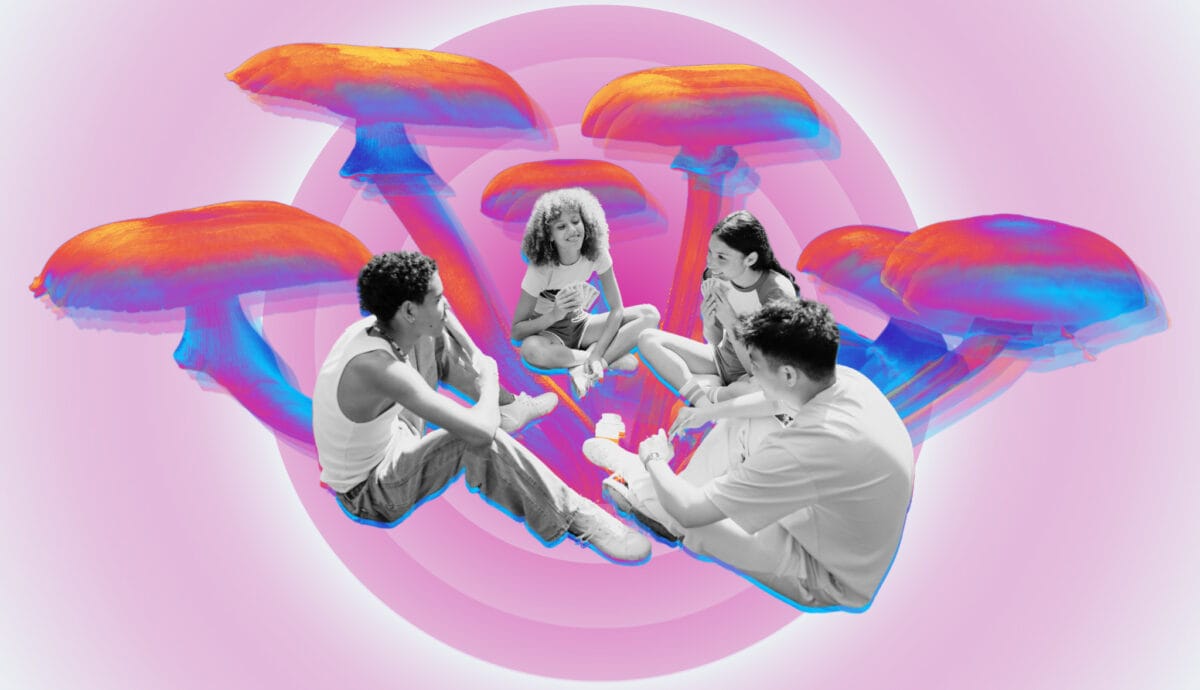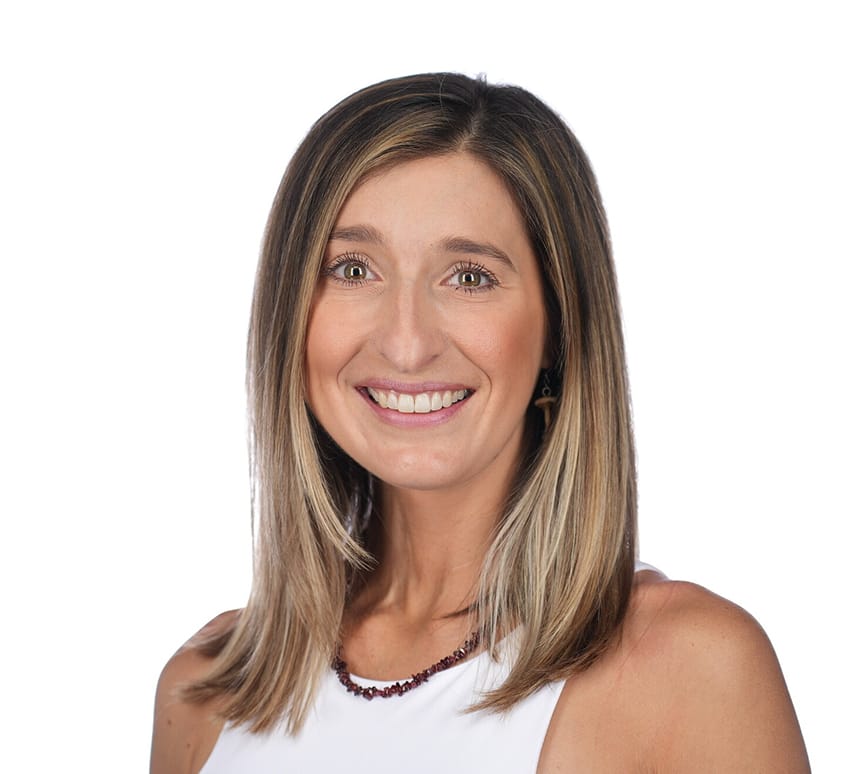Disclaimer: The content of this article does not constitute medical advice. At the time of this writing, psychedelics remain largely illegal in the United States. We urge parents to consult with doctors and legal experts before considering psychedelic therapy for their children.
*All names and identifying features have been changed to protect the privacy of the youths featured in this article.
Mark* was 16 when he dreamt of ending his life. Jessica* was just 15 when she tried. Ketamine therapy saved them both, their clinicians say.
Mia* faced an eating disorder at 16. Her mom’s decision to book her a psilocybin retreat in Mexico led Mia to eat normally again that year.
19-year-old Justin* lived with phobias, anxieties, and bouts of depression. An underground mushroom journey and integration coaching enabled him to feel acceptance and autonomy for the first time.
Mia, Justin, Mark, and Jessica’s teen brains hadn’t fully formed when they ingested these psychedelics. And long-term research on adolescent entheogen use is limited. Yet, parents like Mark’s and Jessica’s are pursuing psychedelic healing for their depressed teens.
Sometimes, parents seek psychedelics as a ‘hail Mary pass’ after traditional antidepressants fail. Other times, psychedelics are the preferred first line of defense. Desperate to ease their children’s suffering, parents are pursuing solutions that break this taboo known to Western culture.
Here, we explore the parent-led phenomena of psychedelic therapy for teens, spanning ketamine clinics, psychedelic retreat centers, and underground circles.

Traditional Youth Psychedelic Use Around the World
Every psychedelic experience is different. Many are uncomfortable. However, the perception that only adults can effectively harness their healing power is steeped in narrow modern framing. The view does not hold up against centuries of use among Indigenous cultures that give young children plant medicine for spiritual and cultural initiation purposes.
The Fang tribe in Gabon, for instance, administers ibogaine to children between the ages of eight and ten. Brazil’s Santo Daime Church members give ayahuasca microdoses to babies, and the Huichol of Mexico give peyote to children starting at age six. The Huichol also use plant medicines prenatally and while breastfeeding to prevent miscarriage, support fetal growth, and enhance breast milk.
Family-based psychedelic rituals remain a common practice in Mexico, according to Andrew Tansil, co-owner of Mexican psilocybin retreat center Sayulita Wellness.
He recalls the time when Sayulita was a local center serving only Mexican nationals.
“People would bring their children as young as five or six, and they would do bufo, the Sonoran toad medicine, and have whole family experiences.”
Sayulita does not serve young children today. However, the center regularly accepts accompanied minors from all over the world starting at 16.
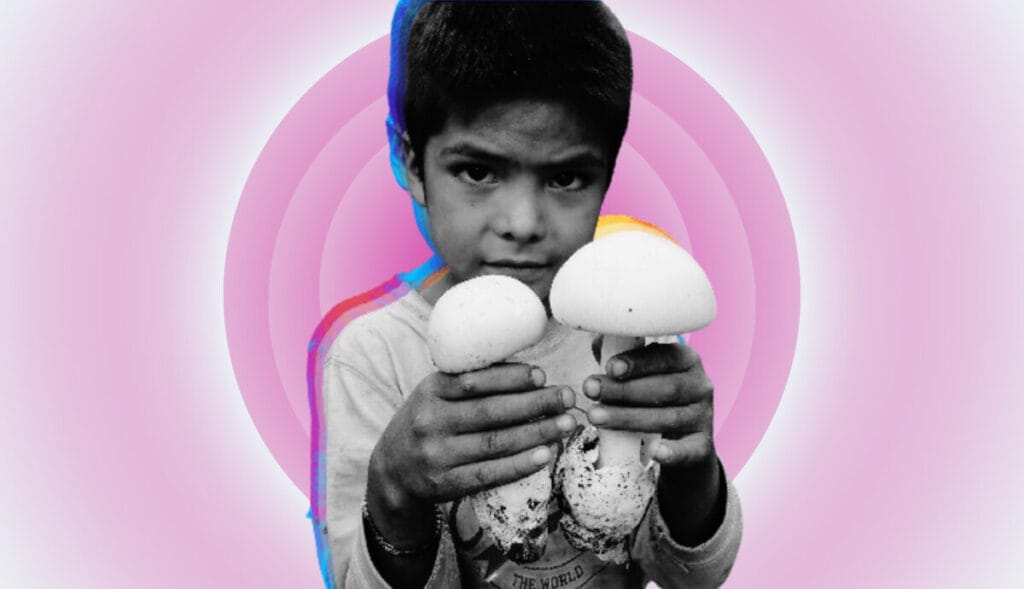
Why Parents Are Seeking Psychedelic Therapy for Teens
Parent-led inquiries on psychedelics have steadily increased over the past few years at Sayulita, with about one teen traveling there monthly. Sometimes, the center welcomes whole households, including parents and children, who ingest the medicine together. Other times, teens engage in private psychedelic sessions with Sayulita’s registered nurse practitioners. One parent must go with minors to these retreats.
Most teens who visit Sayulita have mental health concerns like depression or anxiety. However, eating disorders are the most common problem among young girls like Mia. Fortunately, many emerge from the psilocybin experience transformed.
“Mia was a superstar. She left the retreat eating all kinds of food and continued the trend back at home. Mia really moved forward and did so fearlessly. She got out of her way, and that was the whole intention of the experience,” Tansil said.
Eating disorders are not so common among Certified Psychedelic Coach Ehren Cruz’s young adult clients. However, many suffer from persistent unexplained anxieties, like Justin. Others face existential emergencies. All seek Cruz’s coaching services to prepare for and integrate psychedelic experiences into lasting change.
“The demographic of people reaching out is getting younger. Eighteen to 24-year-olds want to launch into the world with more purpose than the provisional life their parents built. They want alignment but don’t know how to achieve it, and the disconnect is causing a real crisis.”
Cruz finds that parents of these young adults see psychedelics as an bright pathway through the harrowing transition period.
“Parents have often gone through mental health struggles themselves. They have been in talk therapy and on SSRIs (selective serotonin reuptake inhibitors) and have navigated the world from that muted sensory capacity. Now, they’re raising collegiate-age children with similar issues and want to handle healing differently.”
Cruz states that many parents seek psychedelics over SSRIs for teens to avoid clinical diagnoses. However, other parents find their way to psychedelics when all else has failed.
And if new research is any indication of the efficacy of psychedelics for teens, parents may no longer have to rely on anecdotes and their instincts to help them decide whether the compounds are the right choice for their child’s treatment.
Brand new research suggests that teens have higher self-esteem, emotional stability, resilience, acceptance, and social connectedness after a psychedelic experience.
The study aimed to investigate the long-term psychological effects and side effects associated with psychedelic use among adolescents between 16 and 24. Results indicted that not only did the teens have a greater sense of well-being after psychedelic use, they were less prone to depression, suicidal ideation, and delusional thinking.
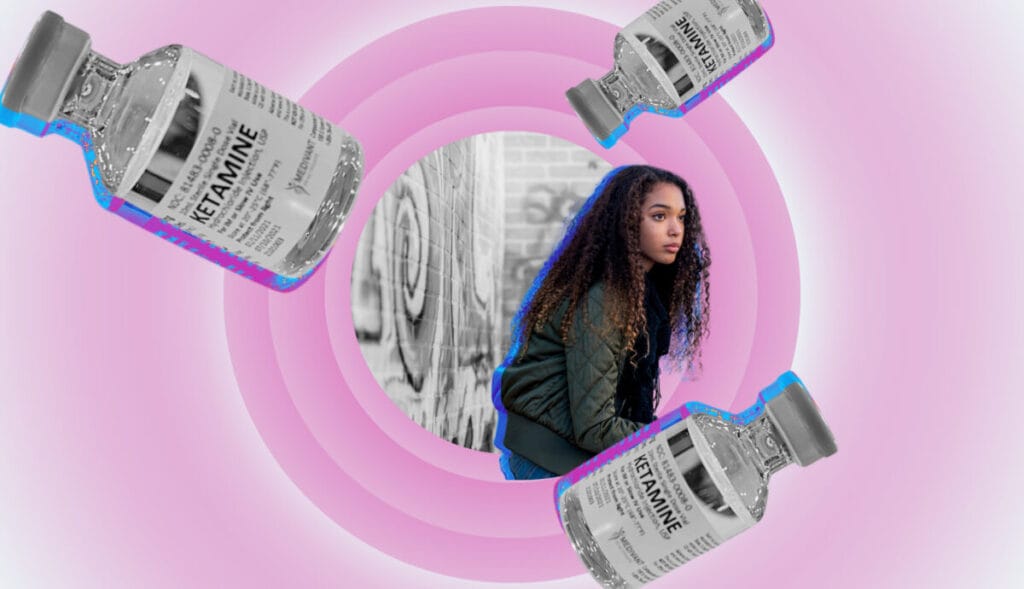
How Ketamine Therapy is Helping Teens
D.C.-area ketamine clinic Avesta Ketamine and Wellness receives many calls from parents seeking psychedelic therapy for treatment-resistant teens. The center treats about one adolescent per quarter, like 15-year-old Jessica, who are severely depressed or nearing the brink of suicide.
Avesta co-founder Dr. Ladan Eshkevari welcomes this population because she believes ketamine saves young lives. She recognizes the potential risks but doesn’t see them as unique to young patients.
“Ketamine is a generally safe medication, but can be habit-forming in all patients,” said Eshkevari, adding, “the compound is rapid-acting with minimal side effects when done in a controlled setting, with providers trained to use it appropriately. Research shows ketamine induces synaptogenesis-growth of new synapses, impacting neuroplasticity.”
In other words, ketamine is well-tolerated at any age while helping form new connections between brain cells and reversing damage caused by stress and depression. This process typically improves mood and quickly reverses suicidal thoughts.
Ketamine research targeting adolescents affirms its antidepressant powers for issues ranging from suicidality to bipolar disorder. Additionally, young adult studies tout the compound’s benefits over SSRIs.
Fortunately for Jessica and Mark, many ketamine clinics accept teen patients. Some centers treat children as young as six.
Mark’s mom, Dana, recalls her son’s history of depression, anxiety, attention deficit disorder, and panic attacks starting at 14. At 16, he began expressing suicidal intentions.
At 18, Mark had a severe dystonic reaction to his antipsychotic medication, Abilify, involving intense involuntary muscle spasms. He refused to continue the medication afterward, so Dana searched tirelessly for alternatives.
Dana was inspired by ketamine research that praised the medicine’s success rate with suicidal ideation. But she was also concerned about ketamine’s widely reported substance abuse risks.
“I second-guessed myself and worried that Mark would somehow get addicted… but in the end, it was his decision,” said Dana.
After Mark’s physician and psychiatrist agreed, Dana brought her son to Priority You ketamine clinic in Clearwater, Florida.
“By the sixth infusion, Mark felt different and no longer had suicidal ideation. He felt hopeful and creative for the first time in years,” said Dana.
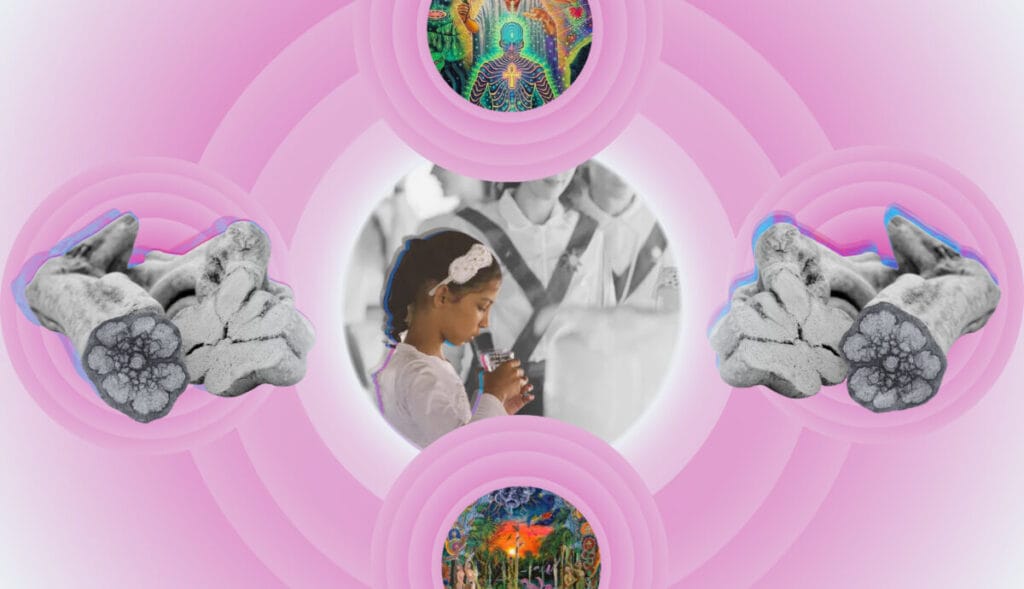
The ‘Rubber Band Effect,’ Close Monitoring, and Expert Support
Mark worked with a therapist for two months after the protocol, developing healthy life skills like nutritious eating, exercising, and engaging with nature. However, four months later, he had a setback after his best friend committed suicide.
Mark went back to the clinic for an infusion. However, instead of feeling better, the ketamine experience confronted him with deeply repressed guilt.
“He had a breakdown,” said Dana.
Like Mark, Justin faced mental health deterioration after his psychedelic experience. However, Justin’s distress appeared just weeks later, and for different reasons.
“We call it the ‘rubber band effect,’” said Cruz.
The rubber band effect refers to the period after the peak experience when the mood-boosting psychedelic glow wears off. Initially, the person feels empowered and capable of transformative change. However, weeks or months later, old fears, egoic patterns, and anxieties can resurface with a vengeance.
“As the mind returns to its normal state, it can perceive the psychedelic insights as threats and tries to reassert itself,” said Ehren.
Justin’s rubber band smacked him into a full-on spiritual emergency. He experienced suicidal thoughts, couldn’t sleep, and started taking stabilizing medications.
“In [recent] conversations with Justin, he said he wouldn’t trade the psychedelic experience. He found the true grace and the essential self he was looking for. But he’s still coming through it two or three months later. The situation was incredibly disruptive,” said Cruz.
Justin and Mark’s psychedelic therapy challenges are common amongst people of all ages. However, young people are particularly vulnerable because they lack engrained self-regulation skills. The shaky emotional defenses teens have mean they need attentive, professional support before, during, and long after breakthrough psychedelic sessions to process fears, contend with disruptive insights, and avoid re-traumatization.
“It’s a big responsibility, and you must ensure young people have a support structure, a network, and other channels to hold it down,” said Cruz.
Ehkevari agrees.
“At Avesta, we ensure adolescents have a lot of support from parents, therapists, psychiatrists, and pediatricians.”
The June 2024 study confirms the caution practitioners are practicing with teens in psychedelic settings. Participants indicated more challenging experiences while under the influence of psychedelics, including ego dissolution, more intense hallucinations, paranoia, and fear. Instances of visual symptoms related to hallucinogen persisting perceptual disorder (or HPPD) were higher than what’s typically seen in adults.
“… differences in acute subjective effects, specifically the less positive role of ego-dissolution experiences for long-term changes in adolescents, as well as a higher prevalence of HPPD-related symptoms suggest that special considerations might be required when assessing psychedelic treatment design and risks,” the report cautions.
Therapeutic intervention helped Mark a great deal after his friend’s suicide. Talk therapy and two additional ketamine infusions allowed him to process and heal the repressed emotions that the first session revealed. Mark started college a month later and is pursuing a degree in game design.
He visits the clinic for booster ketamine doses every six months.
“I don’t think Mark would still be here now if it weren’t for ketamine,” said Dana. “Mark still experiences anxiety. However, he does not have to take medication for it because he’s learned to cope.”
Coping with life’s ups and downs while staying present for the ride is precisely the promise that psychedelics offer. Parents like Dana value that pledge and are helping their teens feel their way through pain rather than medicating their young minds and managing symptoms.
“Current medications have a 70% failure rate and come with a whole host of side effects, with a long uptake time. I think patients and their families are starting to think about treatments that may get to the brain’s ability to heal versus medications that are mainly for symptom management,” said Eshkeavari.
According to Tansil, starting these alternative treatments earlier in life could be crucial.
“Younger people have less conditioning. And so they have a higher chance of having positive, transformational psychedelic experiences. The young person’s mind is also more open. So, healing happens much quicker and more fluidly.”
“The number one comment I hear from people over 60 who come to Sayulita is, ‘I wish I would’ve done this so much earlier in life.”
